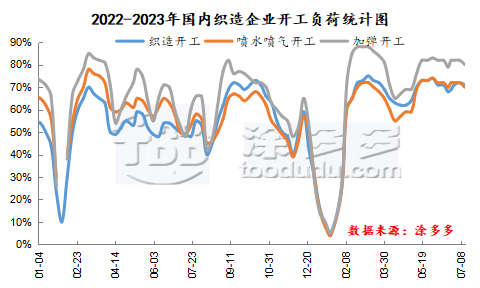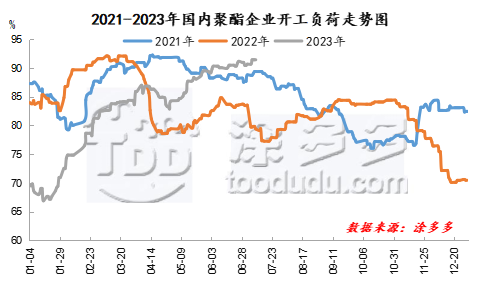Polyester: Can the polyester industry be affected by power rationing when high temperatures hit?
Lead: This year, due to the strong subtropical high pressure, the high temperature weather across the country came relatively early and strong. Under the influence of high temperatures, electricity demand has also begun to exceed supply. Industrial electricity consumption will be limited. Can the load of China's polyester and terminal weaving enterprises be affected?
Since June, the sea surface temperature in the equatorial Middle East and Pacific Ocean has shown a significant upward trend, and is now in an El Niño state. Many areas in China are also generally affected by high temperature weather, and some areas have even set new records for extreme high temperatures in the same period in history. At the same time, the peak of electricity consumption has also arrived early, and the electricity consumption of the whole society has increased rapidly. Recently, the Central Meteorological Observatory has continued to issue high temperature yellow warnings. Xinjiang, central and eastern North China, northern and western Huanghuai, Jiangnan, South China and other places have high temperature weather above 35℃, and temperatures in North China, Huanghuai and other places will return to above 35℃ again. Under the influence of high temperatures, electricity demand has also begun to exceed demand, and some provinces have issued power restriction notices.
This year's Chengdu Universiade is being held at a time when Sichuan Power Grid is peak in summer, and the situation of ensuring safe and stable operation and reliable supply of electricity remains severe and complex. During the Chengdu Universiade cycle, in order to prevent power supply shortages in the power system, short-process enterprises will start operating for 9-17 hours a day, and some long-process enterprises plan to limit power by 20%-30% starting from the 21st.
The electricity loads in Jiangsu and Zhejiang provinces both exceeded 100 million kilowatts, 19 days and 8 days earlier than last year respectively. The high temperature weather has made power peak summer suddenly a hot topic of public opinion. In previous years, power rationing in China generally occurred in the south. When the temperature was high, civil and industrial electricity consumption increased. However, industrial electricity consumption was often restricted to protect civil use. High temperatures have led to insufficient power allocation, triggering periodic "power rationing" in the industry.

However, polyester terminal weaving and printing and dyeing enterprises in Jiangsu and Zhejiang regions are concentrated in scale and use relatively high electricity. However, China's textile industry is currently in the off-season of demand. Coupled with poor order continuity, terminal enterprises often reduce their burdens and reduce production in the summer. Enterprises in Hangzhou, Shaoxing and other places in Zhejiang Province said that electricity consumption for industrial production is currently normal and have not received any notice of power restriction. In previous years, power restrictions were generally imposed from August to September, and there would be a period of time when the fifth limit was imposed. Recently, due to the impact of high temperatures, the start of some weaving companies has declined slightly. At present, the starting load of weaving enterprises in Jiangsu and Zhejiang regions has dropped slightly to 70%, the starting load of textile enterprises has dropped to 80%, and the starting load of printing and dyeing enterprises has dropped to 72%. In the later period, as the high temperature continued and the follow-up of terminal orders slowed down, the load on weaving companies was still expected to continue to decline.

For polyester companies, the comprehensive operating rate of Chinese polyester companies is still at a high level of more than 91%. Some polyester companies have increased their start-up operations, while other polyester companies have had little changes in equipment, so the overall start-up load of the polyester industry remains high. Recently, the PTA market for polyester raw materials has continued to rise, and the production cost pressure of polyester companies is still high. Therefore, there is limited room for continued increase in polyester load in the later period. At present, polyester companies in Jiangsu and Zhejiang have not received any notice of high-temperature power rationing, so the short-term load on polyester companies will remain high.
